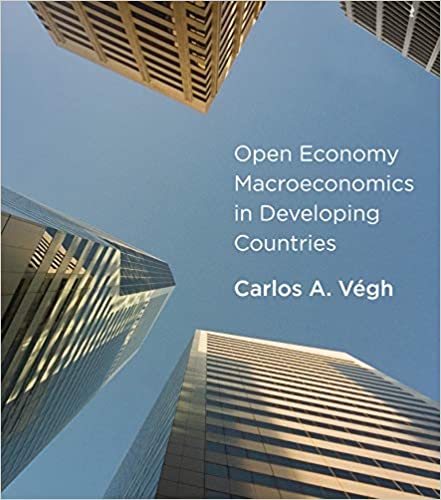An Introduction to The Open Economy Macroeconomics
This course is the second part of the macroeconomics sequence of the master’s program at TeIAS. While classical macroeconomics is concerned about the aggregate economy of a huge and well-diversified, market-oriented economy, such as the US, much of the world economies are relatively small and open economies in which trade shocks, as well as the relative price of non-tradable goods (inverse of the real exchange rate), plays a crucial role in the consumption, saving and labor supply decision of workers. In short, the macroeconomic policy depends on trade and exchange rate policy as well as monetary and fiscal policy.
The purpose of this course is twofold. On the theory side, we first review basic open macro models well suited for developing countries. Then we review important literature on consumption, investment, and frictions in the financial markets and how these frictions may be of importance for the development process of an economy. Consumption, savings, and investment decisions of economic agents are intertwined not only with interest rates in the economy (which is most of the classical macro) but also with trade and the economy’s current account balance. On the other hand, financial markets have proved to be crucial for sustainable and long-term economic growth, development, and stabilization of the economy in the short term.
Nevertheless, the malfunctioning financial markets due to their under-supervision or even wrong supervision has proved to be the primary source of economic crises. Therefore, it is essential to review how these parts of the economy work and how they are interconnected. While labor markets are a critical topic in macro, we will not have time to review the vital theories to understand unemployment in this course. These essential topics remain for future macro-labor classes.
On the methodological side, a macroeconomist needs to be able to compare alternative theories. First, we have to use models to predict how the economy may work under the model’s assumptions and for a given set of model parameters. Then we have to be able to “calibrate/parametrize” or “estimate” parameters for our models to best match the real-world data. Unfortunately, we don’t have time during this course to cover the latter, which needs another separate entire semester course. But we tangentially cover a few topics in dynamic programming and quantitative tools to simulate those problems.
Here is the syllabus for this course.
Textbook
Pablo Kurlat has recently published a comprehensive and advanced-level textbook for undergrad and master’s programs. I recommend this book to every student of modern macro. However, for each part of the course, we use different books and readings:
- Pablo Kurlat, A Course in Modern Macroeconomics, 2020.
- David Romer, Advanced Macroeconomics, fifth edition. 2016.
- Theory of Dynamic Programming: Ljungqvist and Sargent. Recursive macroeconomic theory. MIT Press, 2018.
- Tools of Dynamic Programming: Quantitative economics with Julia by Tom Sargent, John Stachurski, and Jesse Perla. 2022: Julia.QuantEcon.org
For the open economy macroeconomics, I will thoroughly use the relatively recent book by Carlos Vegh. In Open Economy Macroeconomics for Developing Countries, this Uruguayan economist, trained at the University of Chicago and a Professor of International Economics at the John Hopkins University, reviews the main theoretical toolboxes for analyzing small open economies fairly. Then he introduces monetary economics in the presence of trade and exchange rates. Finally, he uses theoretical models to analyze macroeconomic policies (fiscal and monetary policies) and their applications for developing countries. Every student of Iran’s economy should be acquainted with these tools to understand crises and policy tools to deal with the problems of Iran’s current economy. Unfortunately, mastering classical macroeconomic theories is insufficient for understanding macroeconomy in many developing countries such as Iran.
| Title | Slides | Readings | Problem Set |
Part 0: Introduction to Julia Programming Language | |||
| Introduction to Julia | Quant Econ Lectures and Schelling’s Segregation Model | PS1 | |
Part 1: Identification in Macroeconomics | |||
| Fiscal Multiplier and Identification in Macro | Lecture 1 | Nakamura and Steinsson (2014, AER) more slides and teaching material on Emi’s website. Fiscal Multiplier Slide | |
Part 2: Dynamic Programming | |||
| Dynamic Optimization | Lecture 2 | SL, Ch 1&2 | PS2 |
| The Principle Of Optimality | Lecture 3 | ||
| Bellman Equation and CMT | Lecture 4 | SL, Ch 3 | |
| Applications of DP and CMT | Lecture 5 | ||
| Discrete-Time Search Models | Lecture 6 | RM, Ch5 | Project 1 |
Part 3: Open Economy Macroeconomics | |||
| The Basic Intertemporal Model | Lecture 7 | OEMDC, Ch 1 | PS3 |
| Capital Market Imperfections | Lecture 8 | OEMDC, Ch 2 | PS4 |
| Terms of Trades and the Intertemporal Prices | Lecture 9 | OEMDC, Ch 3 | PS5 |
| Nontradable Goods and Relative Prices | Lecture 10 | OEMDC, Ch 4 | PS6 |
| The Basic Monetary Model | Lecture 11 | OEMDC, Ch 5 | Project 2 |
Part 4: Financial Markets and Development | |||
| Financial Markets and Development | Lecture 12 | AM, Ch10 | PS7 |

